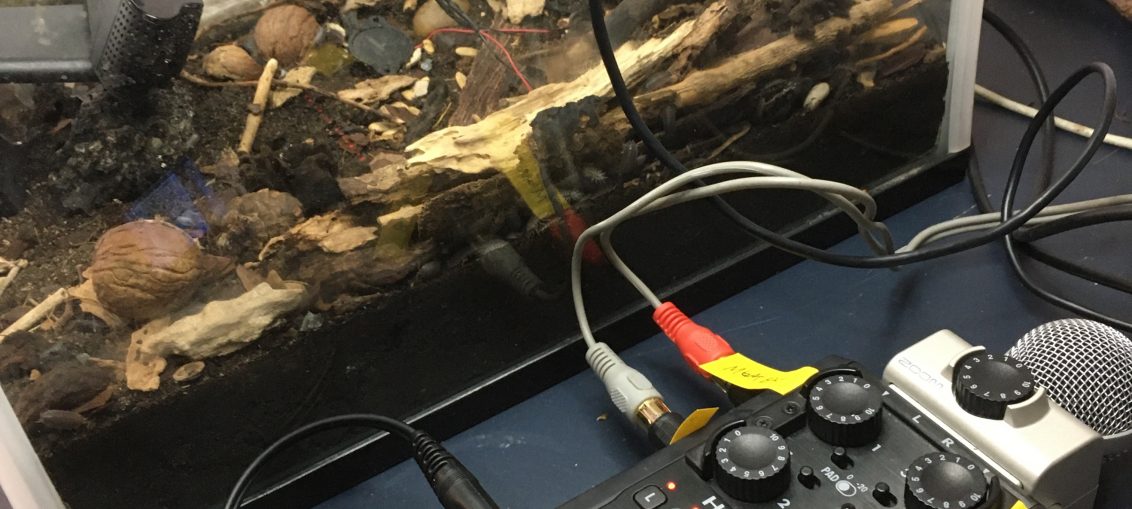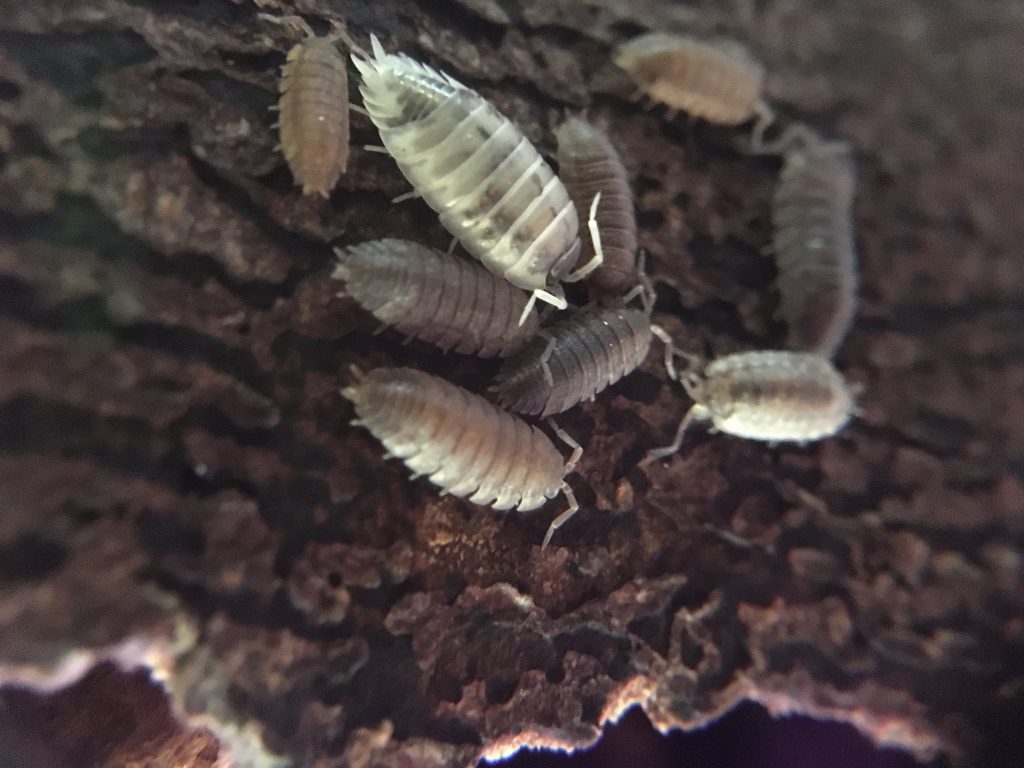
On my various moss bothering escapades, I have found myself exploring shady riverbanks of the Medlock, damp brickwork and stones, the crumbling remnants of industrial architecture, canals locks, and old cotton mills. Rummaging around on the forest floor, damp rotten logs the details of tree bark and rocks. Each of these different environments has its own acoustic ecology (or ‘eco-acoustic’). Mossy sites seem to have quietness to them, the moss visually muffles and envelops the sharp rocks and chaos of broken sticks. There is also a softness to the sound, like the effect of a fresh snowfall.
I decided to take my sound recorder on some of my field trips. When making field recordings, I have to stand perfectly still, breathing slowly, in order to remain inaudible, while the recording is made. This forces me to listen and look closely. The amplified sense of hearing draws my attention to different aspects of the environment. Interaction of bees, a distant watercourse or road, a specific bird an aeroplane. Standing still I become invisible. Riverside rats and mice and voles emerge and scurry past my feet. On the moss itself, I often notice insects loitering, resting or sheltering. Beatles navigating vast moss forest on the tree bark.
I made some new contact mics to record the animals which live inside the Moss; the lesser noticed invertebrates of the soil forest floor. And needed to test them. I started by attaching microphones to moss-covered twigs and bark in my home terrarium which they eat, which worked well, however, this first recording is of woodlice feeding on a soy meatball which I wrapped around the contact mic. This soon attracted loads of hungry isopods which quickly devoured it overnight.



